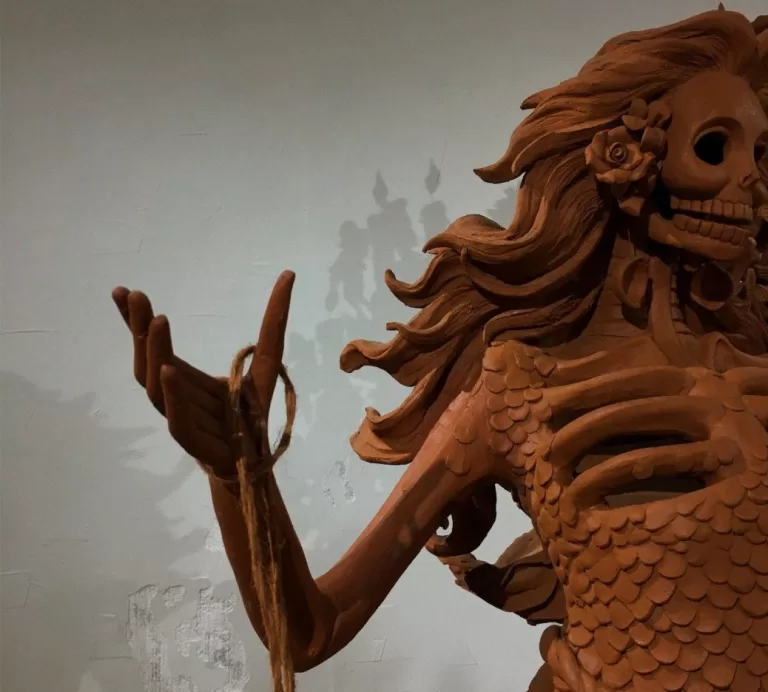Tlanchana

The Tlanchana is an Otomi legend, depicting an enigmatic woman who remains present in many artistic representations to this day.
The legend of the Tlanchana originates from a beautiful Otomi tale from the State of Mexico.
The “sorceress of the lagoon,” mother of the fish, Atl tonan Chane, Atlanchane or Tlanchana; has its origins in an ancient legend of the Otomi culture, which has been part of the culture of the State of Mexico, particularly Metepec, for many years. The Tlanchana is a mythological creature whose name comes from the Nahuatl “tlalli,” which means earth, and “chana,” which translates as woman.
According to the stories told about the Tlanchana, it is said that she was a woman who dwelled in rivers and canals. The National Water Commission (Conagua) states on its blog that the Tlanchana dates back more than 11 thousand years to what was once a lacustrine area full of swamps and nine lagoons guarded by Matlatzinca communities, near Xinantécatl (Nevado de Toluca) and Chignahuapan (Lerma River).
Legend has it that this deity had control over the entire region with her beauty, which dazzled anyone. Although her face, torso, and arms were human, instead of legs, she had a snake tail. It is said that the locals who saw her, hidden behind the tule trees that grew in the lagoon, beheld the beauty of this naked woman who wore a crown and several necklaces, as well as a belt adorned with fish, crayfish, and axolotls.
But the Tlanchana was capricious, possessive, and vengeful. When she was in a good mood, she would flaunt her black snake tail, which was something the fishermen eagerly awaited, as the movement of her tail augured abundance of fish in their nets. However, at other times, the queen would transform her tail into a pair of legs and emerge from the water to seek out the man who had seen her, with the intention of leading him to the middle of the lake where she would drown him.
As the lagoons dried up, fishing ceased, and her appearances gradually became less frequent. However, the legend of the Tlanchana has transcended time, and to this day, it remains an integral part of the identity of Metepec. Moreover, this mermaid has inspired the creation of several museums and cultural exhibitions in Metepec.
That is why today, the master artisans dedicated to pottery are recognized both within and outside the entity for their creations, which help keep cultural traditions alive through artisanal symbols. The Tlanchana, like the Tree of Life, is a clay piece representing the lacustrine area, its form is half fish, with long braids, beautiful complexion, and crowned with flowers.
